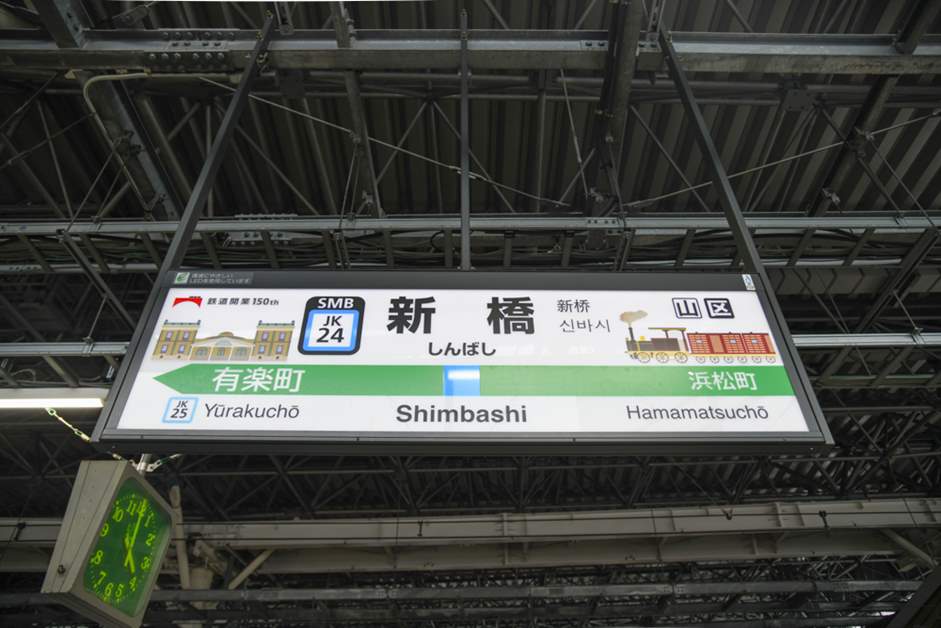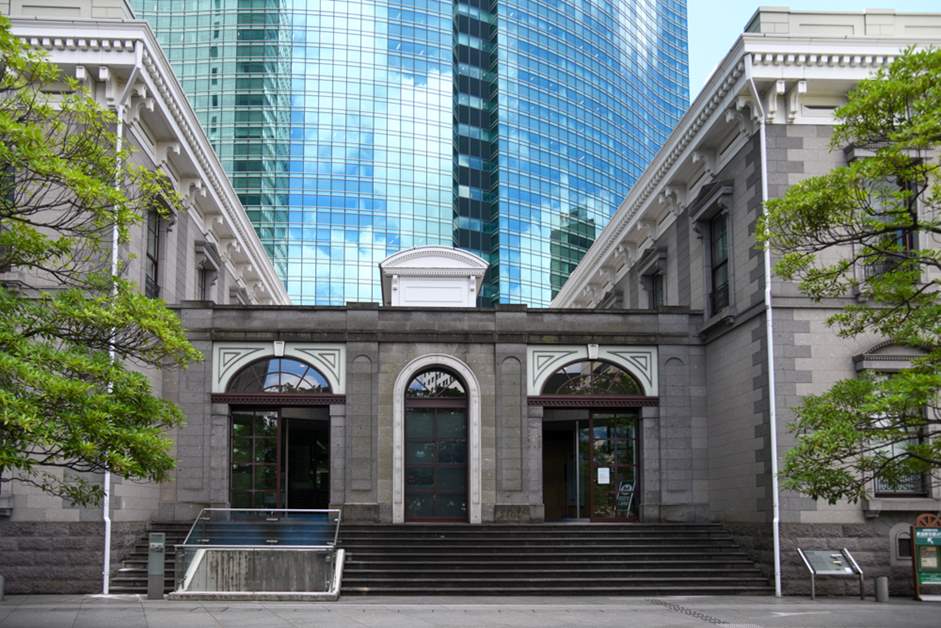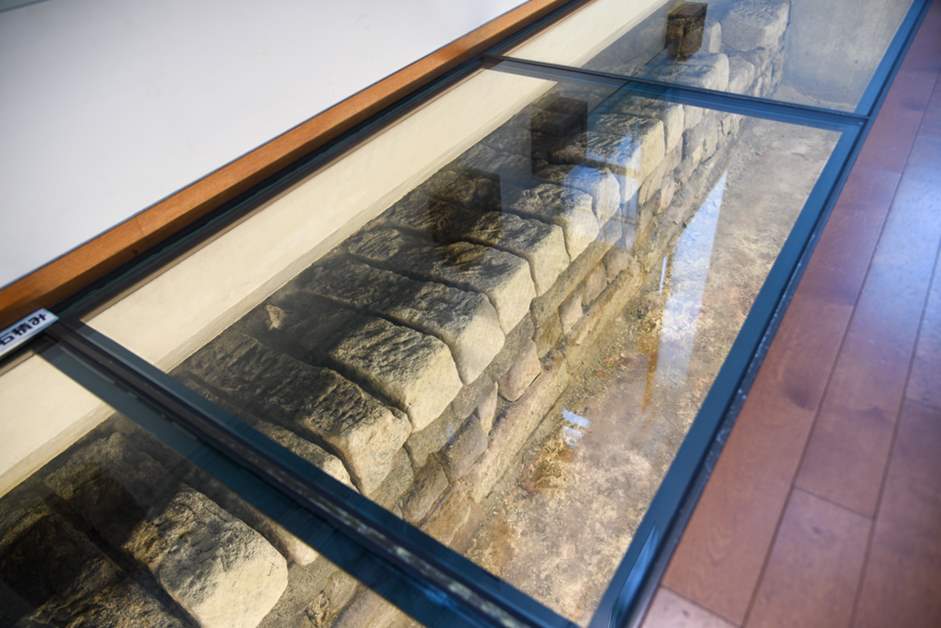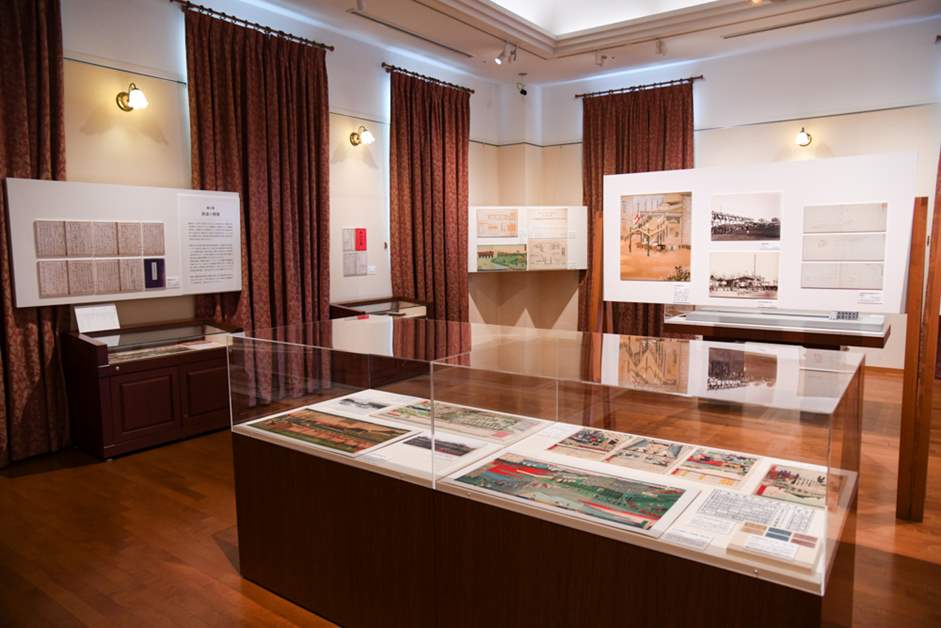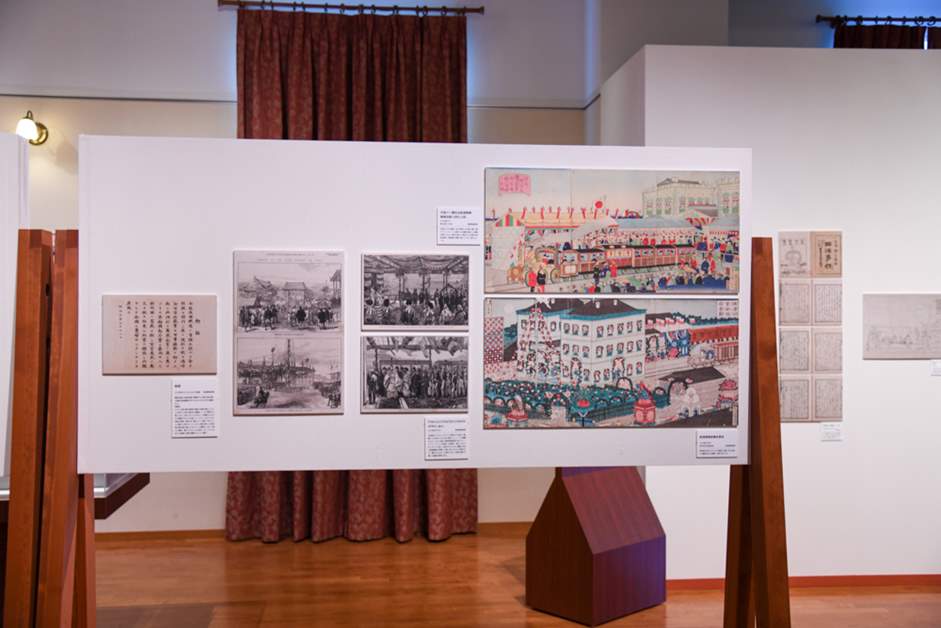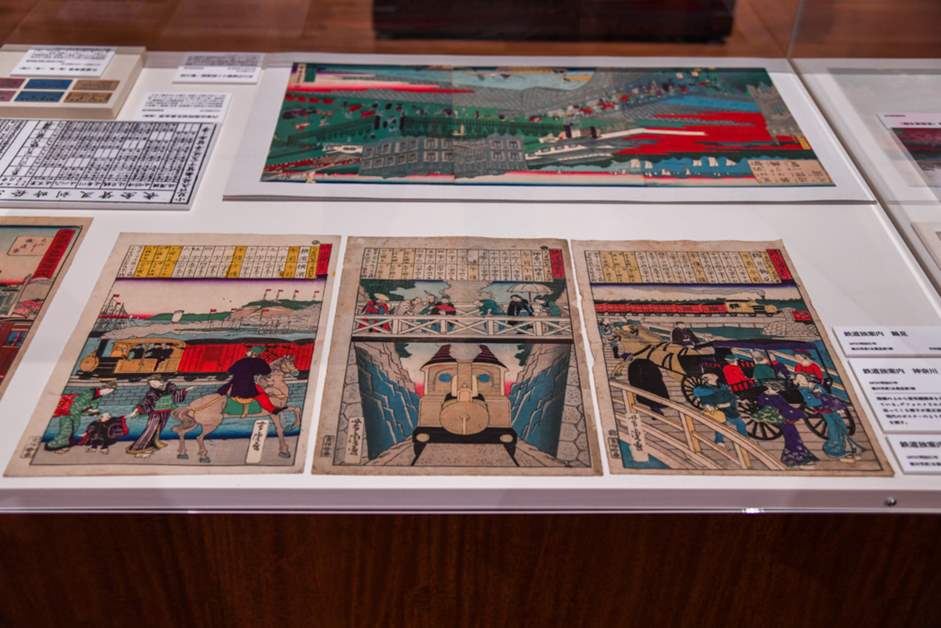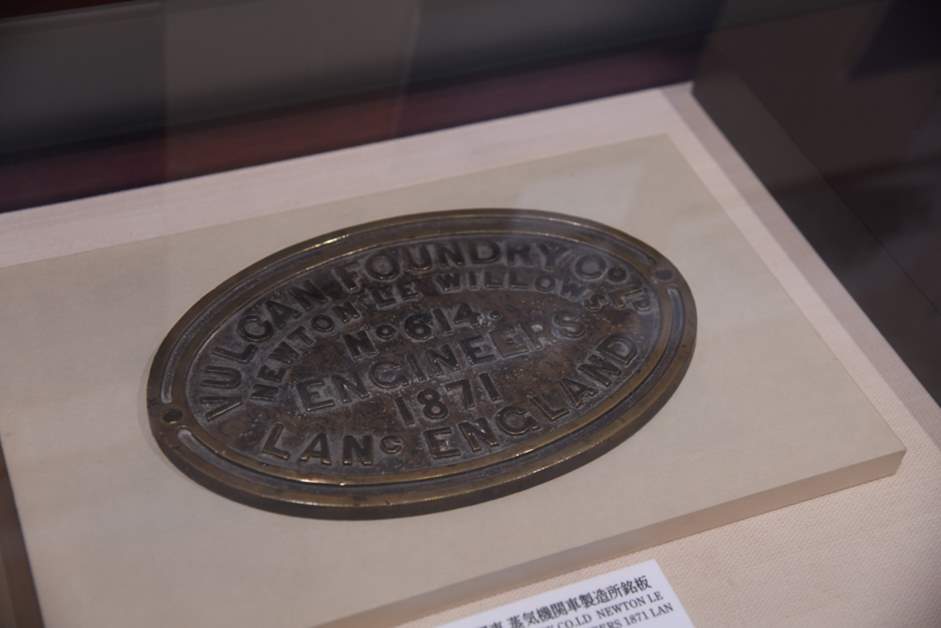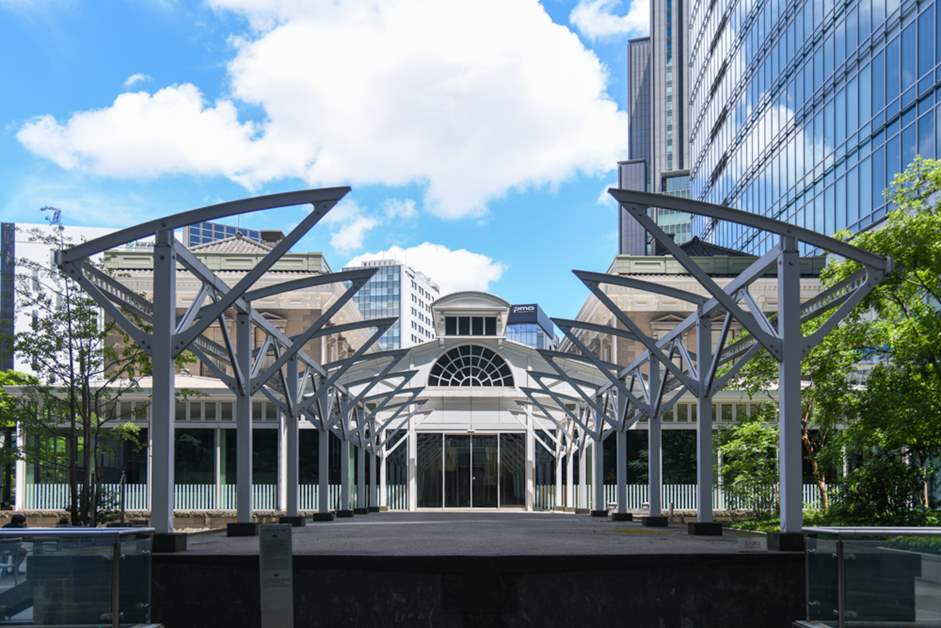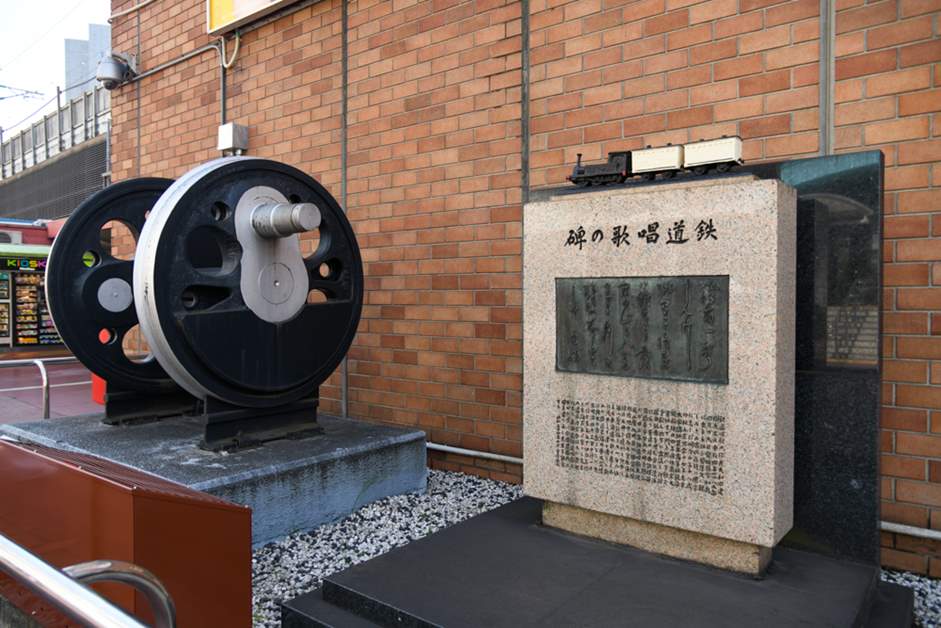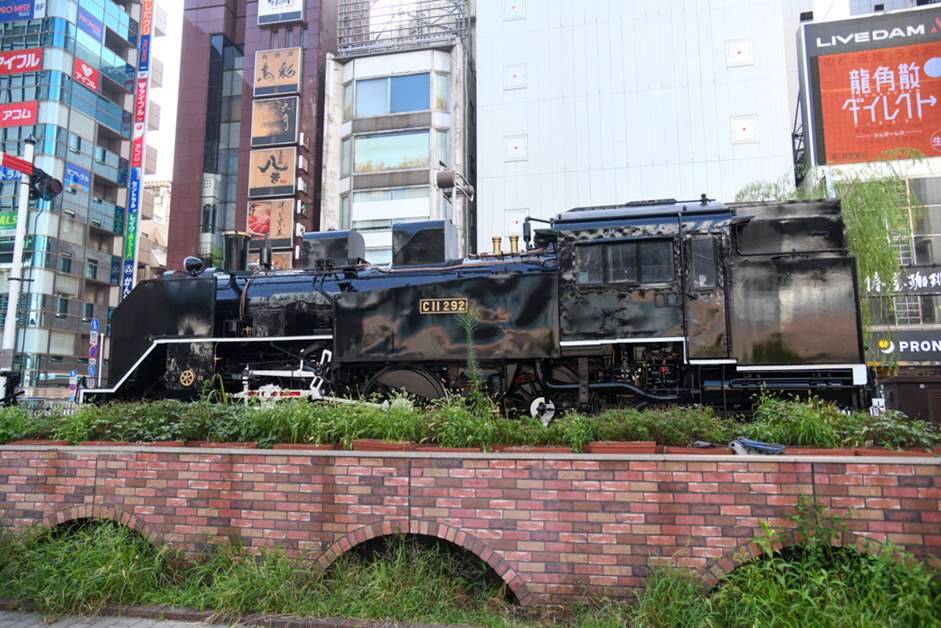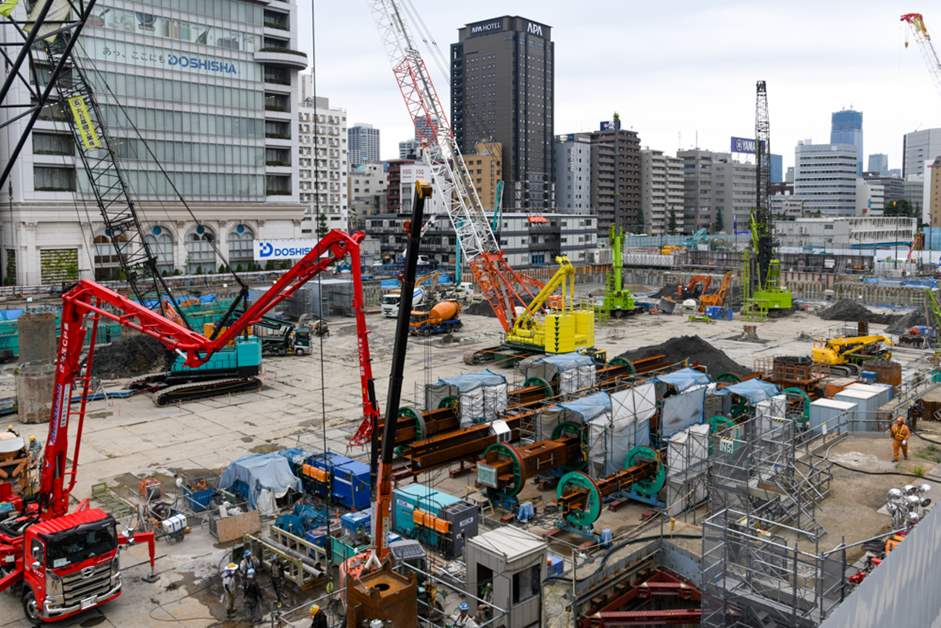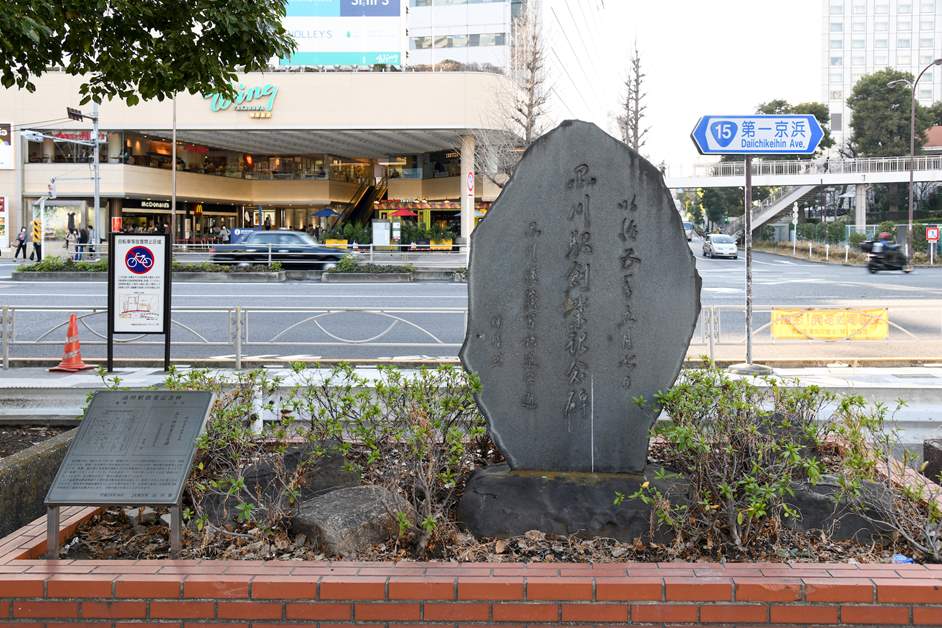[Video Article]Tokyo's Minato Ward is in the midst of the excitement of thef the opening of the railway! GO to the former Shimbashi stop and railway-related spots during the commemorative exhibition!!
This year, 2022, is the 150th anniversary of Japan's first railroad. One hundred and fifty years ago, on October 14, 1872 (September 12 on the lunar calendar), Japan's first railroad officially opened between Shimbashi in Tokyo and Yokohama in Kanagawa Prefecture. Yes, Minato Ward in Tokyo, where Shimbashi is located, is one of the birthplaces of Japan's railroads. With the commemorative day approaching, many places in Minato Ward are already in a celebratory mood. In this section, we will tour around the spots related to the birthplace of the railroad in Minato City, with a focus on the former Shimbashi Railway Station, where a commemorative exhibition is currently being held.
When you get off at Shimbashi Station, the mood is immediately festive!
The starting point of the day was JR Shimbashi Station. As we stepped off the train onto the platform, we found a commemorative version of the station name sign celebrating the 150th anniversary of the start of the railroad overhead. In addition, special announcements are being made inside the station, and there is a trick artwork that allows visitors to take commemorative photos as if they were in the days of the SL.
Japan's first railroad, which started 150 years ago, started from Shimbashi Station in Minato Ward, Tokyo, via the former Shinagawa Station to Yokohama Station in Kanagawa Prefecture, a distance of about 29 km in about 53 minutes, which previously would have taken a full day on foot. At that time, the stations were located in different areas from those of today, with Shimbashi Station located in the Shiodome district to the east of present-day Shimbashi Station, and Yokohama Station located where JR Sakuragicho Station is now located.
Of these, Shimbashi Station was known as Shimbashi Station when it first opened. The station building from those days was lost due to the Great Kanto Earthquake and other damages, but in 2003, the "Old Shimbashi Station" was reconstructed in the same location as in the past, following the designation of the remains found during excavation surveys conducted since 1991 as a national historic site. Located about a 5-minute walk from the Ginza exit of Shimbashi Station, the Western-style building has a retro presence that sets it apart from the surrounding modern buildings.
The old station building was constructed with a ticket gate at the end of the main entrance that led to the platform. The station included a waiting area and station office. The current reconstructed building is a two-story exhibition facility, and on the right-hand wall just inside the building is a ceramic mural of "Tokyo Meisho no nouchi nouchi Shimbashi Shiodome Steam Car and Railroad Bureau Station Building true picture" by Hiroshige Utagawa III, an ukiyoe artist active from the Edo to Meiji periods. The painting depicts a station building almost exactly like the one we have just seen and the bustling surrounding area.
Learn about the history of the opening of the railroad in Japan at the "Old Shimbashi Railroad Depot.
In the permanent exhibition room on the first floor, visitors can look through a window at the foundation stone of the station building as it was when it was first excavated, the Izumadaraishi stone used for the former platform, train nameplates and track maintenance tools excavated from the remains, and other materials that show the face of the station in its operating days. There are also exhibits on the history of Shiodome Station, which was renamed "Shiodome Station" after Shimbashi Station was relocated to its current location and functioned as a freight terminal until 1986, and on the progress of the reconstruction of the old Shimbashi depot.
On the second floor, up a spiral staircase, a variety of special exhibitions on railroads are held throughout the year. Until November 6 (Sun.) of this year, the "Shinbashi Station, Open for Business! exhibition is being held to commemorate the 150th anniversary of the railroad's opening.
This exhibition looks back on the opening of the Shimbashi Railway Station with rare nishiki-e (woodblock prints), photographs, and documents. The first half of the exhibition, beginning with the introductory chapter "The Beginning of Railroads," introduces the history of the railroad culture brought to Japan from the West and the opening of Japan's first railroad just over two years after the start of construction with the prestige of the nation.
Shigenobu Okuma, a native of the Saga clan who built Japan's first model steam locomotive, led the construction of the railroad as a politician. Edmund Morrell, who was involved in the construction of railroads in the British colonies, and then was invited by the Japanese government as a "hired foreigner" to teach valuable technology. Another highlight of the exhibition is the key figures in the birth of Japanese railroads, including Masaru Inoue, who came from the Choshu domain (present-day Yamaguchi Prefecture) to study in England at the end of the Edo period and put the railroad technology and knowledge he learned there to good use in Japan.
The following exhibition introduces the bustle that followed the opening of the railroad, beginning with the opening ceremony held in the presence of the Emperor Meiji. The grand opening ceremony was held on October 14, 1872, at the Shimbashi Station, inviting the Emperor Meiji, government officials, and foreign dignitaries, and a special train was put into operation. In the "Korin Railway Opening Ceremony (partial)," a record of the ceremony, we can find the names of Saigo Takamori, Okuma Shigenobu, Itagaki Taisuke, and Minato Ward-related figures such as Katsu Kaishu and Shibusawa Eiichi.
At first, Japanese railroads were called "land steam" (okajojoki). When the railroad first opened, it was an expensive vehicle for the common people, so seeing the brand-new station building and steam locomotives became the purpose of visiting the station itself. The "Night View of Shimbashi Station at the Opening of the Railway" depicts the Shimbashi depot gorgeously decorated as if it were a Christmas party, with people surrounding the depot. The waves of people drawn only with lines, like peas in a pod, convey some of the enthusiasm of the time. In addition, an exhibit on steam locomotives that were active during the period of the company's founding introduces locomotives from the A class to the E class imported from England. Visitors can also see the "No. 1 Locomotive Steam Locomotive Works nameplate" that was attached to the locomotive when it was founded.
After learning about the history of the area through the museum's exhibits, visitors can go outdoors. In the plaza at the back of the building, the platform and tracks from the time of its founding have been recreated, and at the beginning of the tracks stands the "Zero Leagues Marker," which was used as the starting point for surveying during the construction of the railroad. If you overlap your memory of the scenery you just saw in the nishikie, you will be able to imagine a little more realistically the bustle of the bygone days when civilization was in full bloom!
Visit railway-related spots in Minato-ku
After visiting the former Shimbashi depot, let's go around the spots in Minato City related to the history of the railroad. First of all, let's return to JR Shimbashi Station, where a "Monument of Railroad Songs" and a monument of "D51 Locomotive's Driving Wheels" are located at the Shiodome Exit of the station.
The railroad shoka was published in 1958 and was very popular at the time. Stations and places of interest throughout Japan were woven into the lyrics, and starting with the first collection for the Tokaido Line, lyrics were created for every region of the country, contributing greatly to the education of geography. This monument was erected in 1957 to commemorate the 100th anniversary of the birth of lyricist Kenki Owada. In the railroad song, the names of Takanawa Sengakuji, Shinagawa, Daiba, and other places in Minato Ward appear even after the first line inscribed on the monument, "The train leaves the Shimbashi bridge with a single blast of the steam whistle, and the moon that lingers in the mountains of Atago is my travel companion.
On the other hand, the D51 locomotive, nicknamed "Degoichi," is a famous domestic locomotive. It debuted in 1936 and remained in service until 1975. The large driving wheels were actually used on the real Degoichi.
On the other hand, the D51 locomotive, nicknamed "Degoichi," is a famous domestic locomotive. It debuted in 1936 and remained in service until 1975. The large driving wheels were actually used on the real Degoichi.
Then, as you pass through the station and exit the Hibiya Exit, you will see a static exhibit of a C11 steam locomotive, the symbol of Shimbashi Station. This steam locomotive has also been redecorated in time for the 150th anniversary of the railroad's opening. It has been beautifully repainted and now welcomes railroad fans visiting Shimbashi with its shiny appearance.
The "Takanawa Chikujiki Ruins," a major historical discovery.
Next, let's move on to JR Takanawa Gateway Station. The "Takanawa Chikujiki Ruins" were discovered in 2020 during excavations associated with the redevelopment of the west side of this station.
Until around the beginning of the Showa period, this area was covered by the sea. However, for military reasons, it became necessary to construct an embankment on the sea to run the rails for the 2.7 km section from Tamachi to Shinagawa. The "Takanawa Chikkebi Site" is the remains of the dike that was built on the sea, and the fact that it has been excavated for the first time in about 100 years, having been thought to have been lost along with the reclamation, is a very important discovery in the history of Japan.
Until around the beginning of the Showa period, this area was covered by the sea. However, for military reasons, it became necessary to construct an embankment on the sea to run the rails for the 2.7 km section from Tamachi to Shinagawa. The "Takanawa Chikkebi Site" is the remains of the dike that was built on the sea, and the fact that it has been excavated for the first time in about 100 years, having been thought to have been lost along with the reclamation, is a very important discovery in the history of Japan.
In addition to the stone walls that supported the tracks, the remains of bridges and signals have been found at the embankment site, and these are valuable railroad remains that show the highest technology used at the time. Although the site cannot be seen directly due to construction work in the surrounding area, visitors standing on the deck in front of the station ticket gates overlooking the redevelopment area can get a sense of the scale of the project.
Finally, move one more stop to JR Shinagawa Station. At the Takanawa Exit rotary of the station stands the "Shinagawa Station Founding Monument. In fact, Shinagawa Station was "the other place where the railroad was established" when it started temporary operations with Yokohama Station on June 12, 1872 (May 7 of the lunar calendar), four months earlier than the opening of Shimbashi Station. The Shinagawa depot at that time was located near Yatsuyama Bridge, south of the current Shinagawa Station, and although nothing remains of the depot today, it is still a valuable part of Japan's railroad history.
The 150th anniversary of the railroad's opening is expected to be a hot topic of conversation nationwide as we approach the anniversary in October. In Tokyo's Minato Ward, the commemorative mood is rising in various places in addition to Shimbashi Station and the former Shimbashi Station. We hope you will visit these unique "places where the railroad was founded" and leave behind wonderful memories of this memorial year.
The 150th anniversary of the railroad's opening is expected to be a hot topic of conversation nationwide as we approach the anniversary in October. In Tokyo's Minato Ward, the commemorative mood is rising in various places in addition to Shimbashi Station and the former Shimbashi Station. We hope you will visit these unique "places where the railroad was founded" and leave behind wonderful memories of this memorial year.





